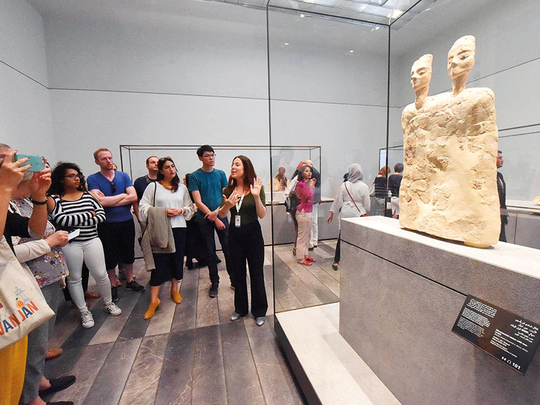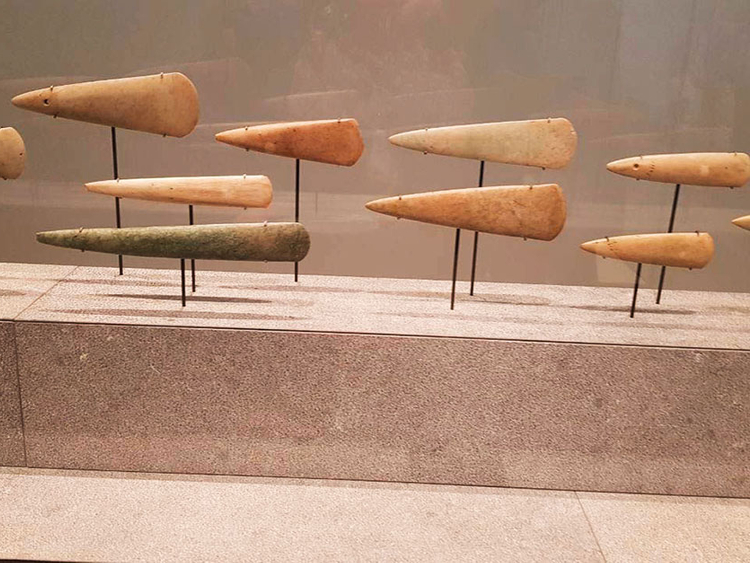
Abu Dhabi: It’s placed in a commanding position, and every visitor to the Louvre Abu Dhabi will have to encounter the two-headed statue that captured the interest of French President Emmanuel Macron during his visit earlier this week.
The enigmatic plaster figure with a rectangular bust is nearly 8,000 years old, and is known to be one of the earliest large scale statues of the human figure. Made by people who inhabited modern-day Jordan, it offers a glimpse into the start of settled human civilisation in areas like the Levant, Mesopotamia, China and America, as depicted in The First Villages gallery.
Among other ancient artefacts is a Mesopotamian vase from 5,500 BCE that was found in the UAE’s Marawah Island. According to a museum tour, the discovery of the vase 1,000 kilometres away from its origins shows that people were sailing the Arabian Gulf even 7,000 years ago, and that trade was common.
The development of pottery, said to have first appeared around 10,000 BCE, is also traced in a case that holds a decorated cooking jar from Japan, and two funerary jars from China and Afghanistan dating back between 3,500 and 2,000 BCE. Mankind is believed to have switched to a more sedentary existence because it could not easily transport these beautiful yet fragile artefacts.
Terracotta figurines also appear to be common artefacts of the period. One female figurine from modern-day Iraq is 7,000 years old from the area of modern-day Iraq, and another from Ecuador is 4,000 years old. The rounded shapes of these otherwise dissimilar statuettes is said to symbolise humanity’s enduring concerns with fecundity and fertility.
Next to these figures, Stone Age discs and blades are on display. The artefact text explains that these are likely to have been “objects of prestige” that indicate the emergence of the first social hierarchies in places as far removed as Europe, China and Arabia.
The displays are neatly arranged in an easily navigable space, and compared to later galleries, the artefacts are few in number. Yet, it is humbling to find proof of humanity’s activities and concerns from such a distant period in time.
Timings and entry fee: 10am-8pm on Saturday, Sunday, Tuesday, Wednesday; 10am-10pm on Thursday and Friday
Dh60: Adults
Dh30: 13-22 years
Dh30: Education professionals
Free entry: Children under 13. Members of Louvre Abu Dhabi’s Art Club loyalty programme, journalists, visitors with specials needs and their companions
Don’t miss: The symmetry and beauty of the blades and tools on displays depict a fascination for aesthetics and skill even in the earliest of human civilisations. Take a close look at the tools, and also at the intricate detailing on the tiny human figurines.
Next: The First Great Powers













